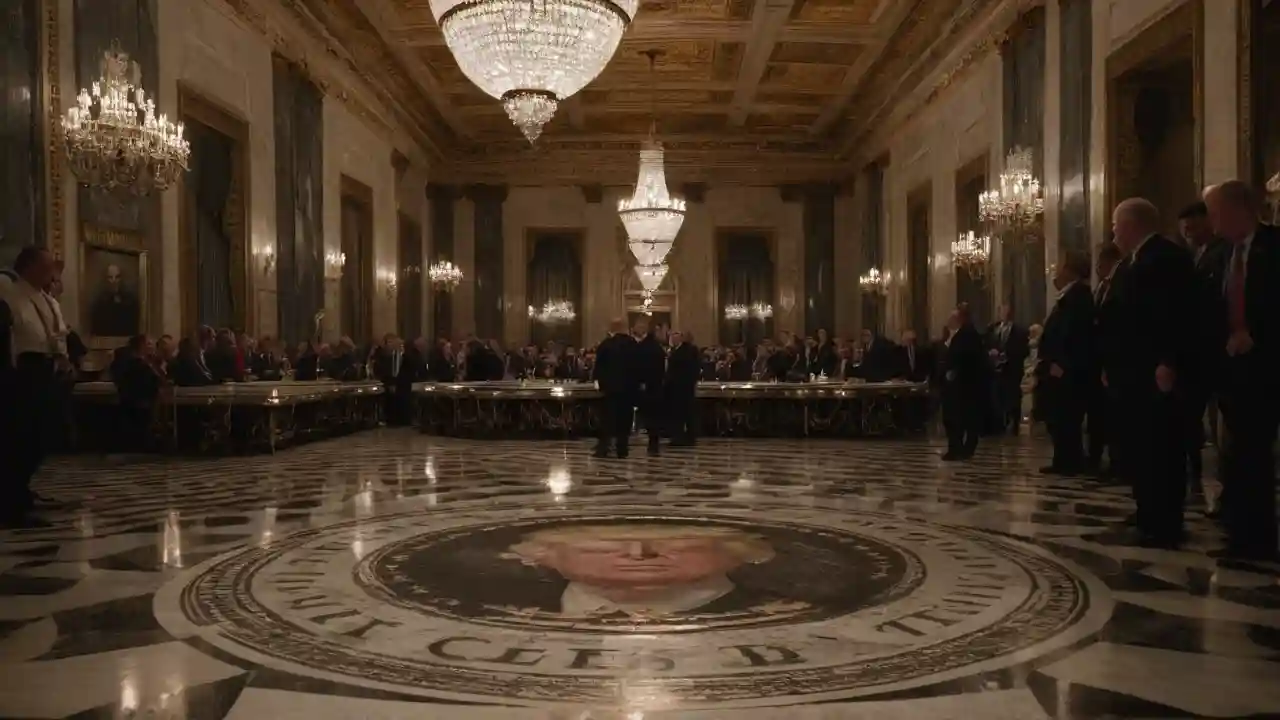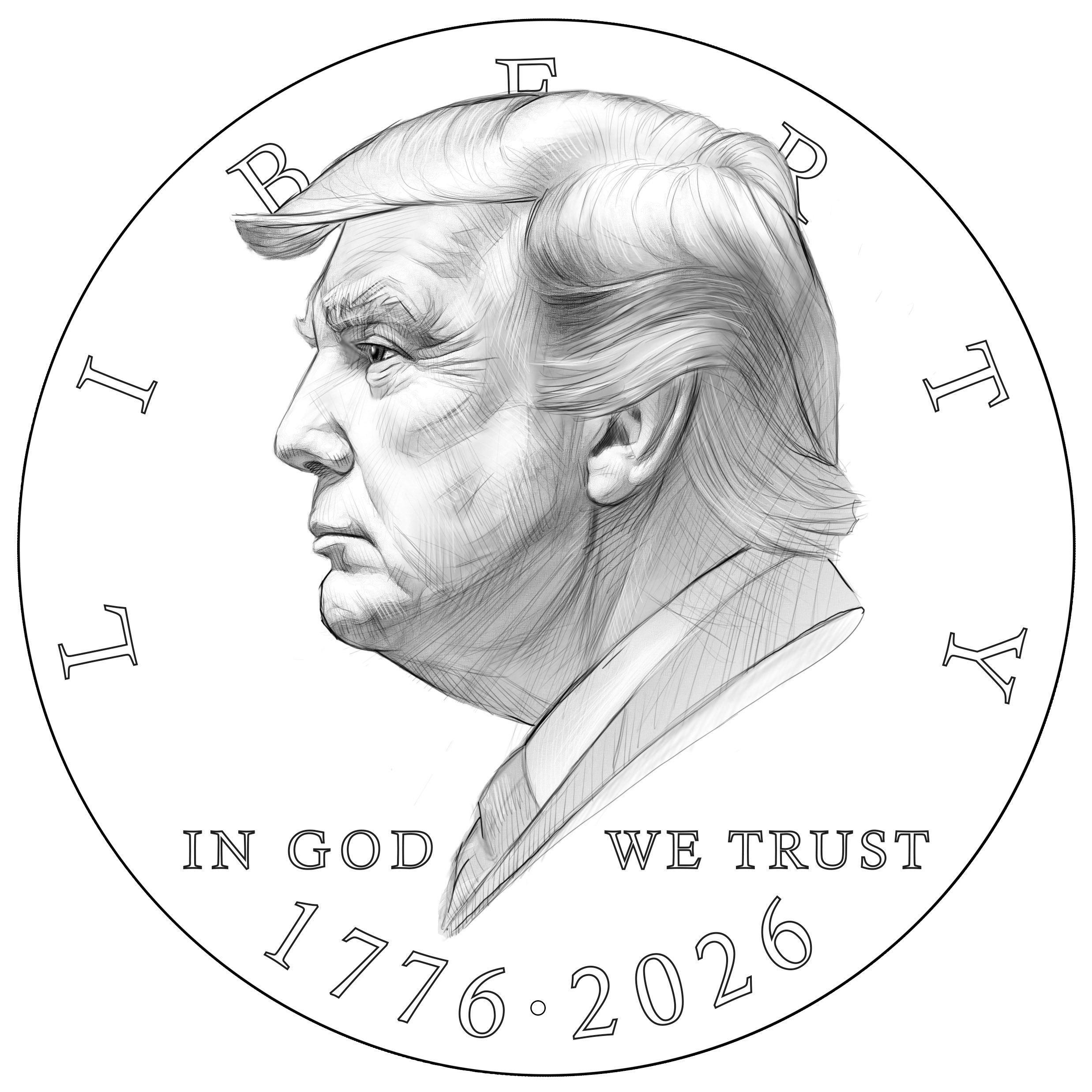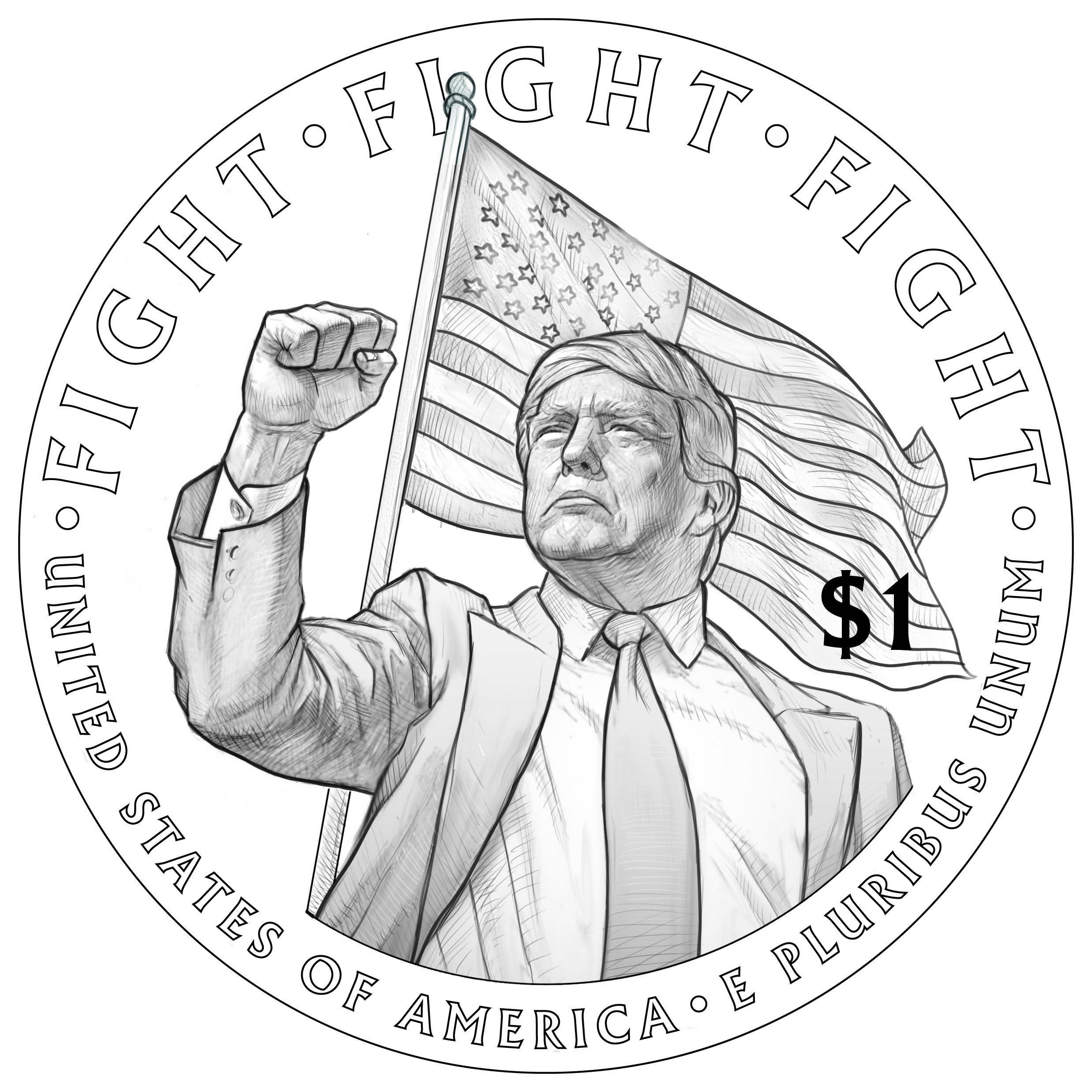
Treasury Weighs Trump Portrait Coin for America’s 250th, Stirring Legal and Political Storm
Treasury Weighs Trump Portrait Coin for America’s 250th, Stirring Legal and Political Storm
Proposed designs mix presidential imagery with campaign symbolism, setting the stage for a battle over law, tradition, and the meaning of national commemoration.
WASHINGTON — The Treasury Department is floating a bold idea for America’s 250th birthday: a $1 coin bearing Donald Trump’s portrait. Officials revealed draft designs on Friday, igniting debate over whether the plan crosses both legal lines and long-standing currency traditions.
The early sketches show Trump’s profile on one side, but it’s the reverse that grabs attention. The draft depicts him with a raised fist against the backdrop of an American flag, surrounded by the words “FIGHT, FIGHT, FIGHT.” The phrase echoes his rallying cry from July 2024, delivered just moments after he survived an assassination attempt. Treasury leaders stressed that nothing is final, especially with the current government shutdown freezing progress, but the idea has already unleashed a wave of controversy.
A Legal Loophole or Clever Workaround?
At the heart of the debate lies a little-known law: the Circulating Collectible Coin Redesign Act of 2020. Trump himself signed it during his first term. The law gives Treasury power to issue special $1 coins between 2026 and 2030 to mark the nation’s semiquincentennial. The language is broad. It calls for designs “emblematic” of the anniversary but never says living figures are off-limits.
That silence matters. U.S. bills have carried an explicit ban on living people since 1866, when lawmakers, weary of Civil War-era scandals, shut the door firmly on the practice. Coins, however, operate under a patchwork of rules. A handful of exceptions exist. Calvin Coolidge’s face, for instance, appeared on a 1926 half dollar while he was still president. That obscure precedent could suddenly become a linchpin in today’s legal battle.
When a Coin Becomes a Campaign Symbol
If the portrait stirs debate, the “FIGHT, FIGHT, FIGHT” inscription throws gasoline on the fire. Instead of a national motto like “E Pluribus Unum,” the draft coin borrows directly from Trump’s campaign stage. Supporters may see it as a symbol of resilience. Critics call it blatant politicization of government coinage.
Treasury tried to frame the design as a tribute to America’s fighting spirit, but the imagery is hard to separate from Trump’s brand. Analysts suspect that sparking outrage may not be a bug—it may be the whole point. By tying the coin to culture-war battles, the administration ensures attention, no matter what the final product looks like.
Roadblocks and Likely Lawsuits
Before any coin can be struck, advisory groups like the Citizens Coinage Advisory Committee and the Commission of Fine Arts must weigh in. These bodies, staffed with career experts, have a history of pushing back against designs that lean too heavily on politics. That review process could strip away the most controversial elements, even if the portrait survives.
Court fights also look inevitable. Opponents are preparing arguments that general currency traditions should apply, even if the 2020 law technically left wiggle room. Lawsuits could drag the issue into federal court, where judges would have to interpret overlapping statutes.
Another unknown: circulation. Will this coin hit everyday wallets, or will it be sold mainly to collectors through the U.S. Mint? The difference matters. Regular $1 coins already struggle to gain traction with the public, while limited collector runs often sell out quickly and fetch hefty premiums. Treasury hasn’t disclosed plans for mintage numbers, metals, or distribution—details that will ultimately shape its market fate.
Money, Markets, and the Power of Controversy
In the world of collectibles, controversy sells. Coin dealers and grading firms often see a surge in demand when politics collides with design. If Treasury caps mintages or offers silver versions, expect a scramble on day one. Secondary markets usually show a spike in prices early, followed by a slide once supply catches up—unless quantities are severely restricted.
This dynamic mirrors a broader phenomenon traders call the “Trump trade”: assets linked to the former president often attract bursts of speculative money, more for symbolism than fundamentals. The coin could follow the same pattern, with design unveilings and court filings triggering short-lived market ripples.
More Than Metal: A Cultural Flashpoint
What began as a numismatic program has now morphed into something bigger: a fight over how America tells its own story. The 250th anniversary was supposed to unite the nation in celebration. Instead, the coin controversy risks turning it into another battlefield over imagery, tradition, and political identity.
Most experts believe the final coin, if it appears, will likely be toned down. Trump’s portrait may stay, but the rally chant could vanish, replaced with safer symbols like dates or allegorical figures. Even so, the attempt itself sets a precedent. Future administrations may cite this moment when they push their own boundaries in redesign programs.
One thing is clear: whether or not the coin ever lands in your hand, it has already achieved something. It’s turned a commemoration into a headline-grabbing showdown—reminding us once again that in modern politics, even pocket change can become a cultural weapon.

